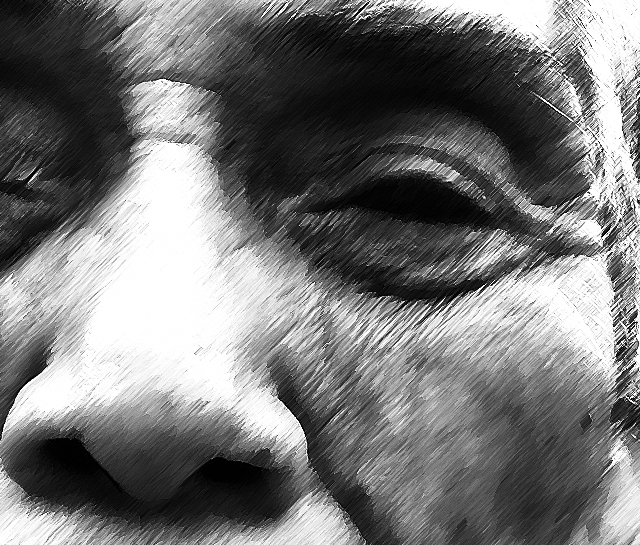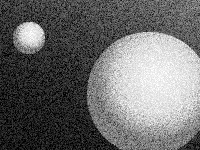What is texture?
Texture is the actual or the illusionary tactile value on the surface of an area as created by nature or by an artist through a manipulation of the visual elements.
Here is an example of how texture can be applied to manipulate value, color, and form to give the impression of a face. Notice the lines created with oil pastel:
Another textural example is of stippling, using dots in varying proximities to one another to give the illusion of changing values:
Common Texture Patterns
To get an idea of some common patterns employed by artists to give the illusion of texture in 2D art (or real tactile texture in 3D art), see some swatches below:
Basic Hatching
The most basic method of creating value in ink drawing is linear hatching. Fine parallel lines fill an area, so that from just a slight distance, we have the illusion of value. The closer the lines are, the less white paper shows, and the darker the value appears. Heavier (thicker) line weight also gives a darker appearance.





Crosshatching
Crosshatching uses layers of hatching placed at an angle. Usually, the first layer would be vertical, the next horizontal, the next at forty-five degrees, and so on. This methodical approach can look a little mechanical, so artists often use variation in direction to add interest.
Contour Hatching
Hatching placed at a slight angle creates a moire-like effect, the diamond-shaped fragments of white paper enlivening the denser areas of value. This technique is often used in figure drawing, with the direction of line helping to suggest the cross-contours of the body. Hatching which follows a contour can also help to make objects appear more three-dimensional.



















